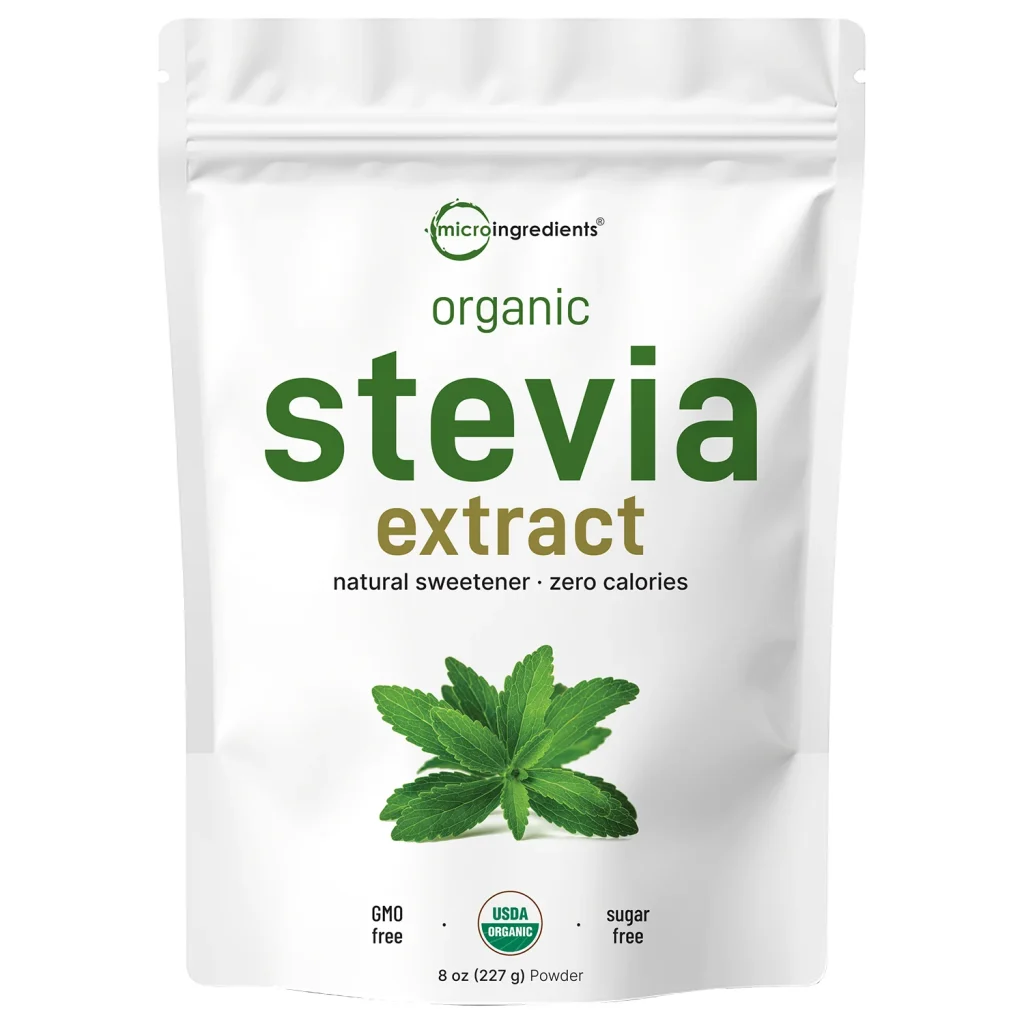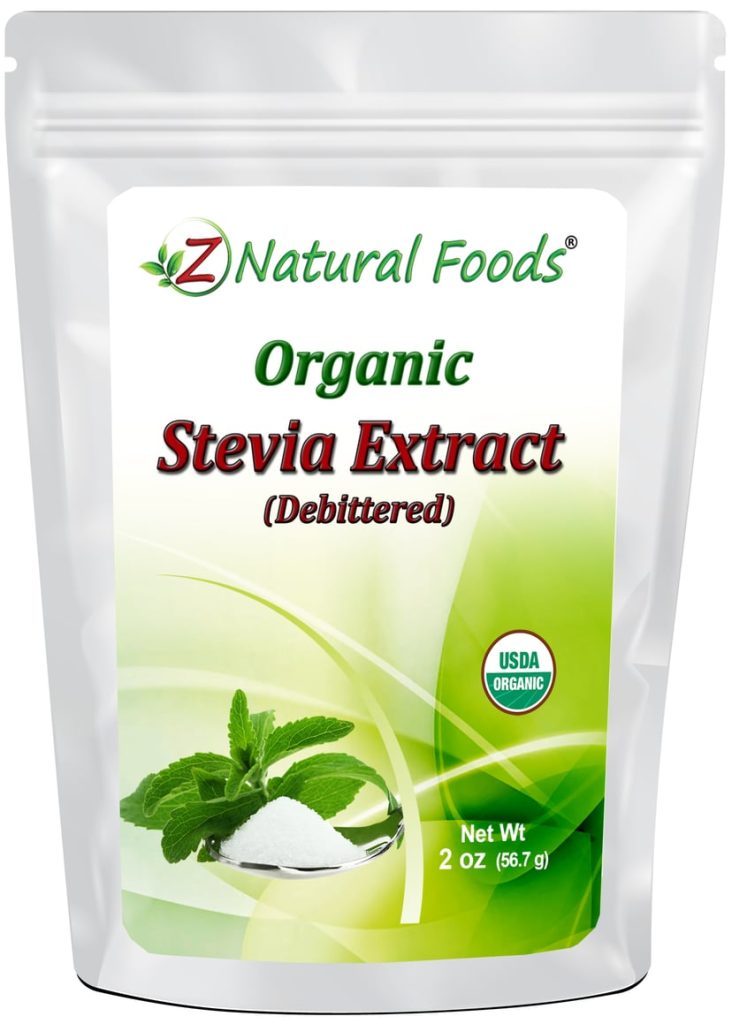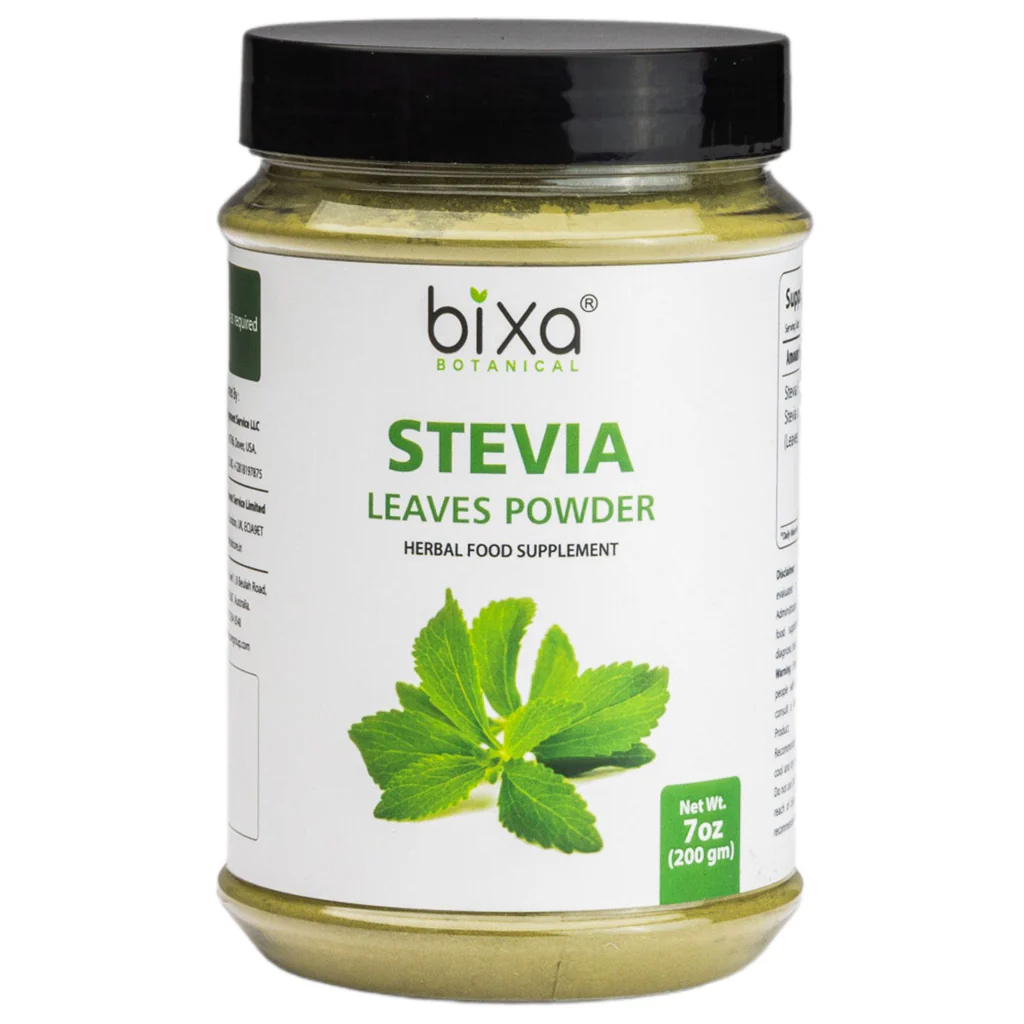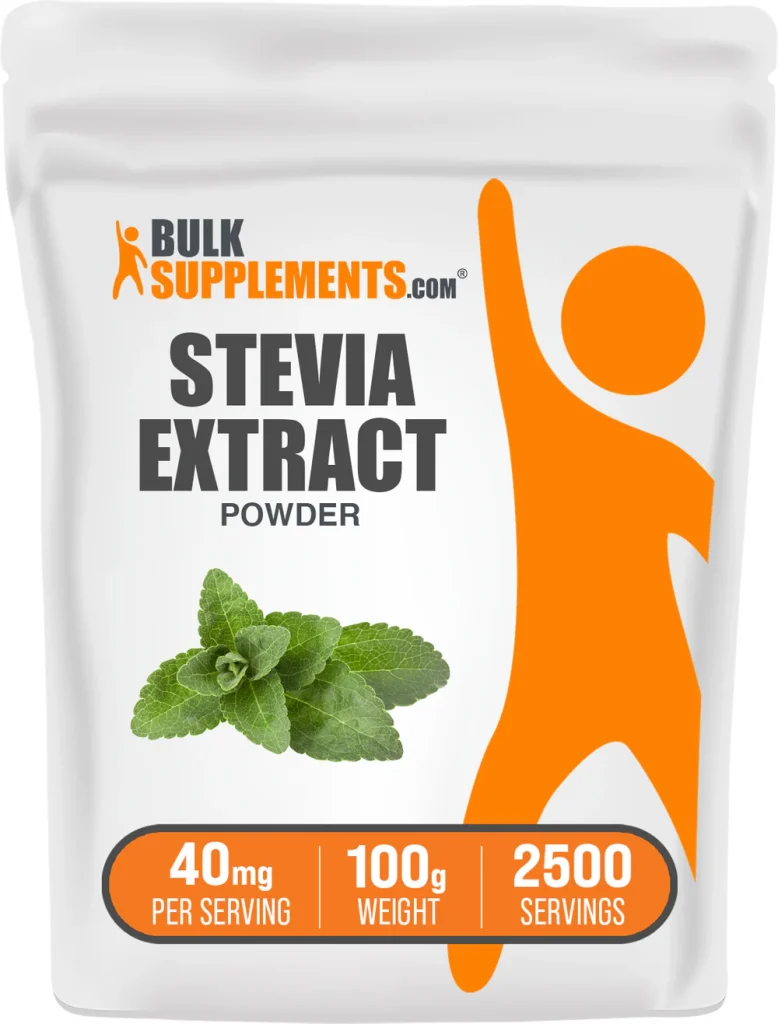What is Stevia sweetener and where does it come from?
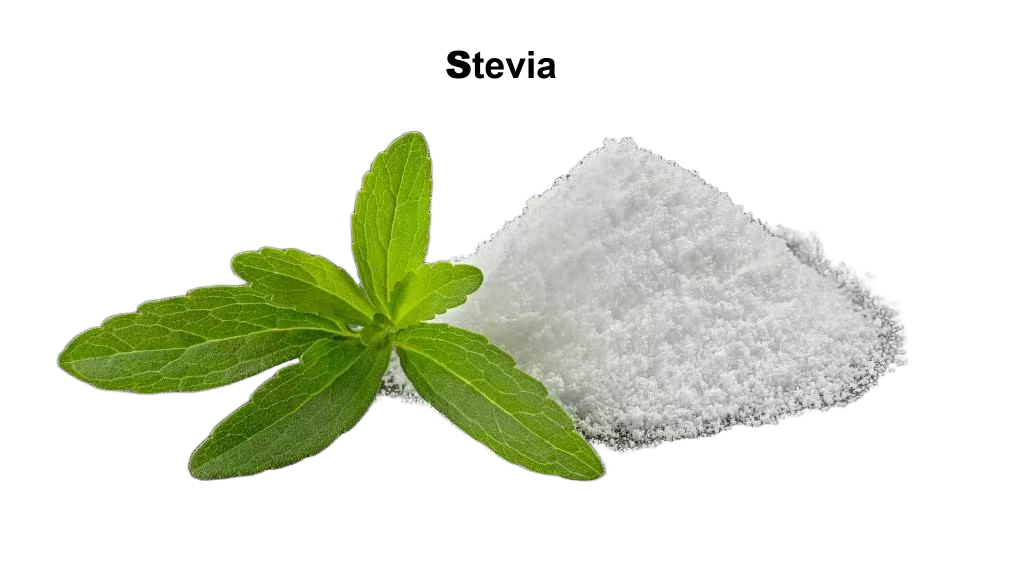
Stevia is a common name for the zero-calorie sweetener that is derived from the stevia plant. Stevia is a plant of the Chrysanthemum family, and its leaves have been used as a sweetener in South America for hundreds of years. Extracts from the stevia leaf have been available as dietary supplements in the U.S. since the mid-1990s, and stevia sweetener have been permitted for use in foods since 2008. Like all low- and no-calorie sweeteners, stevia may be used to replace sugar and reduce calories in foods and beverages while maintaining sweetness in products that consumers expect.
How is Stevia made?
To make stevia-based sweeteners, the key components are steviol glycosides – the sweet part of stevia leaves. Currently, there are four methods to produce steviol glycosides: extraction, bio-conversion, glucosylation and fermentation.
Extraction
This was the original production method for stevia-based sweeteners. During this process, stevia leaves are crushed and steeped in hot water. The mixture is filtered to separate the liquid plant extract from the leaves. The extract is purified again and produces a sweetener that contains various steviol glycosides.
Bioconversion
This process begins with steviol glycosides that have already been extracted from the stevia leaf. Bioconversion replicates the stevia plant’s natural maturation process, using enzymes to convert various, different steviol glycosides into specific, targeted steviol glycosides such as Rebaudioside M (abbreviated Reb M) and Reb D. Although the enzymes used in this production method are derived from genetically modified micro-organisms, the subsequent purification process(es) remove all enzymes and/or micro-organisms from the final product.
Glucosylation
As a foundation, glucosylation also uses steviol glycosides that have been extracted from stevia leaves. In this production method, enzymes are used to add glucose units, which produces a combination of steviol glycosides. All enzymes and/or micro-organisms are removed from the final product to deliver purified stevia extract.
Fermentation
Fermantation also replicates the stevia plant’s natural genetic process to create steviol glycosides. In the fermentation production method, steviol glycosides are produced by genetically modified micro-organisms that convert sugars into steviol glycosides like Reb M and Reb D. As with the other processes that may involve enzymes and micro-organisms, the extract is refined to remove those components and produce high-quality stevia sweetener.
How to use stevia sweetener as a sugar substitute

Stevia sweetener may be used in place of table sugar in your favorite foods and beverages. A pinch of stevia powder is equal to about one teaspoon of table sugar.
Tasty ways to use stevia include:
- in coffee or tea
- in homemade lemonade
- sprinkled on hot or cold cereal
- in a smoothie
- sprinkled on unsweetened yogurt
Some stevia brands, such as Stevia in the Raw, can replace table sugar teaspoon for teaspoon (as in sweetened beverages and sauces), unless you’re using it in baked goods.
You can bake with stevia, although it may give cakes and cookies a licorice aftertaste. Stevia sweetener in the Raw recommends replacing half the total amount of sugar in your recipe with their product.
Other brands aren’t made specifically for baking, so you’ll need to use less. You should add extra liquid or a bulking ingredient such as applesauce or mashed bananas to your recipe to make up for the lost sugar. It may take some trial and error to get the texture and level of sweetness you like.
Health Benefits of Stevia sweetener
1.May Help Manage Diabetes
Stevia may be helpful for people with diabetes or prediabetes who want to manage their blood sugars. Since it has little to no carbohydrates, stevia doesn’t raise blood sugars like table sugar does, making it a good alternative.
Along with providing a helpful sugar substitute, which can help manage diabetes, the stevia plant may also have anti-diabetic effects, helping to lower blood sugar and improve insulin levels.
2.Reduces Added Sugar Intake
Many Americans consume more added sugars than the Dietary Guidelines for Americans (DGAs) recommend. The average American consumes 17 teaspoons of sugar daily, but the recommended intake is no more than 12 teaspoons for a 2,000-calorie diet or 10% of your total calories.
3.May Lower Blood Pressure
Some studies in humans and animals have found that stevia reduces diastolic and systolic blood pressure. For example, one study found that taking 750–1500 mg of stevioside (a chemical compound from the stevia plant) per day modestly reduced blood pressure in people with mild to moderate hypertension.
4.May Prevent Cavities
Sugar is a primary cause of dental caries (cavities). Bacteria in the mouth metabolize sugar. The sugar produces acid that wears down your tooth enamel. Consuming less sugar can help prevent cavities, and swapping sugar for stevia may also help.
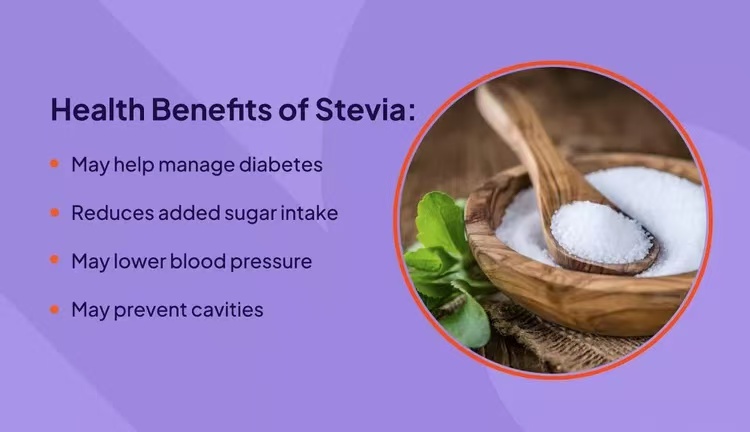
Nutrition of Stevia sweetener
Stevia is a non-nutritive sweetener, meaning it doesn’t contribute nutrients or calories to the diet. This sets it apart from sweeteners like table sugar, honey, syrup, brown sugar, or molasses, which do contribute nutrients and calories.
One packet (1 gram) of stevia contains:
- Calories: 0
- Fat: 0 gram (g)
- Sodium: 0 milligrams (mg)
- Carbohydrates: 1 g
- Fiber: 0 g
- Added sugars: 0 g
- Protein: 0 g
While stevia sweetener does have 1 g of carbohydrate per packet, this amount is very minimal and won’t contribute to your total carb intake in a meaningful way.
The main brand of Stevia in the market
